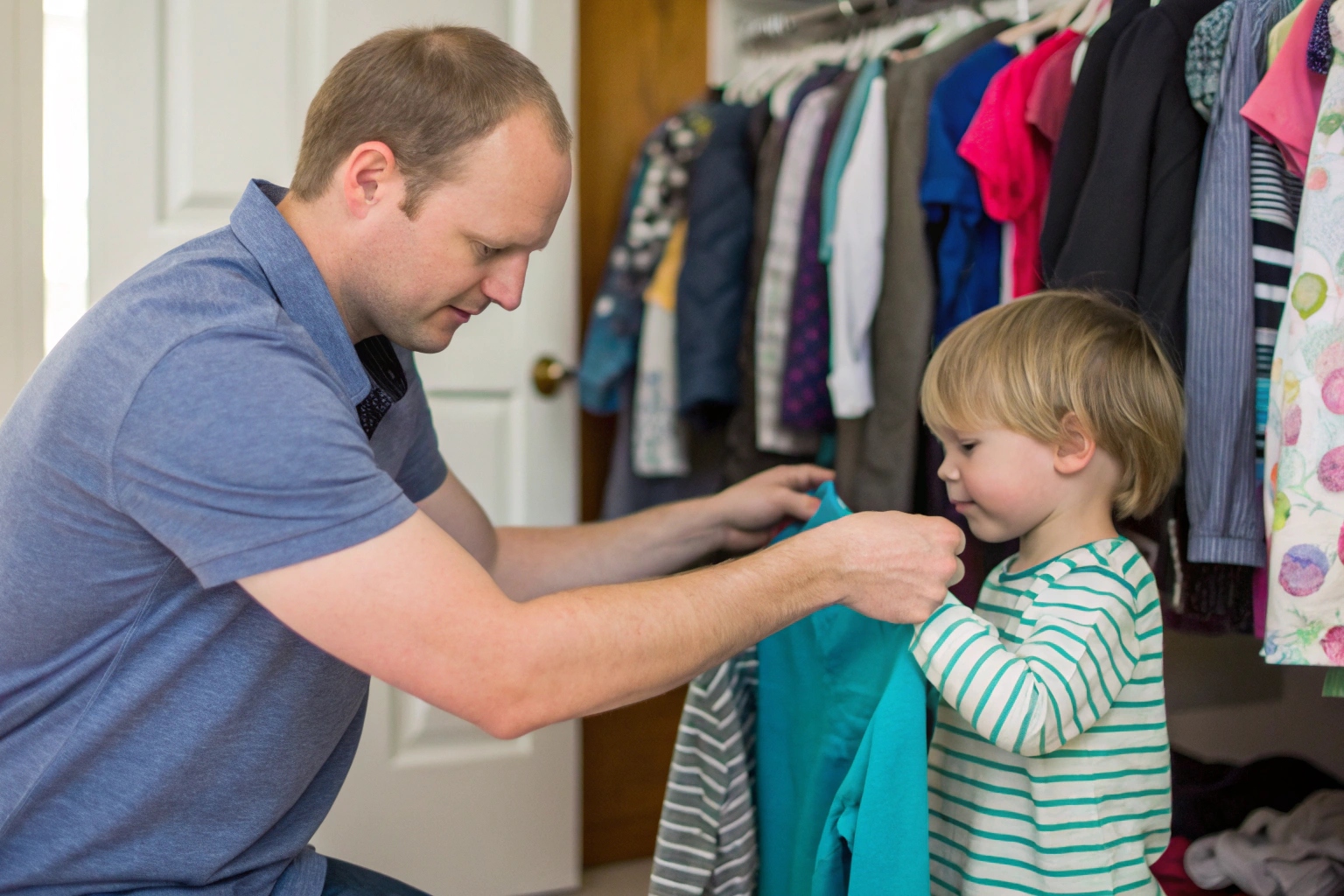It’s a question every parent eventually faces: when should I stop dressing my child every morning?
Most children start dressing themselves between ages 3 and 5. By encouraging independence early, parents help kids build confidence, motor skills, and a sense of responsibility.
Let’s explore how and when to support this important life skill—and why letting go (a little) can be a big step forward for your child.
When Do Most Kids Start Dressing Themselves?
Getting dressed is more than a daily task—it’s a milestone in independence. So, when do kids typically take the lead?
Most children begin attempting to dress themselves between 2 and 3 years old and become mostly independent by ages 5 or 6, depending on the child’s motor skills, patience, and personality.
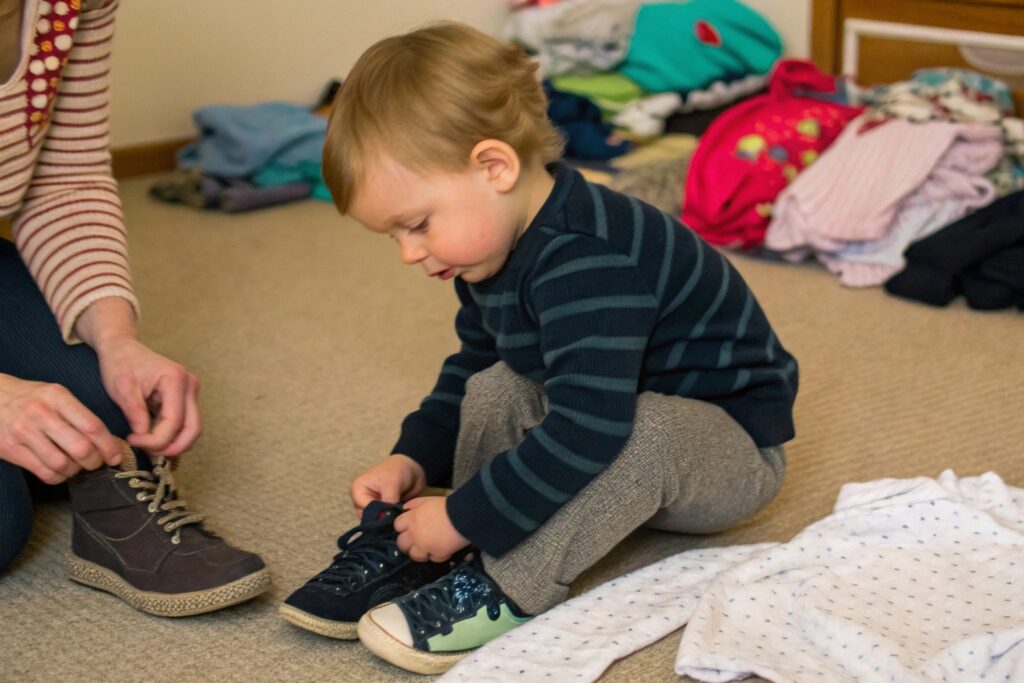
What are the typical milestones in dressing independence?
| Age Range | Common Dressing Abilities |
|---|---|
| 1–2 years | Pulls off socks, lifts arms for shirts |
| 2–3 years | Puts on simple pants, helps with T-shirts |
| 3–4 years | Dresses with some help, chooses clothes |
| 4–5 years | Dresses independently, may need help with buttons or fasteners |
| 5–6 years | Fully independent, improving with speed and order |
Every child is different. Some love the idea of picking outfits early. Others prefer help for a little longer. As long as your child is showing interest, you’re on the right track.
How to Encourage Dressing Independence in Toddlers?
Toddlers want to do things by themselves—even when it takes longer. That motivation is your best tool.
Encouraging toddlers to dress themselves starts with simple steps, supportive routines, and patient encouragement. Build confidence before perfection.
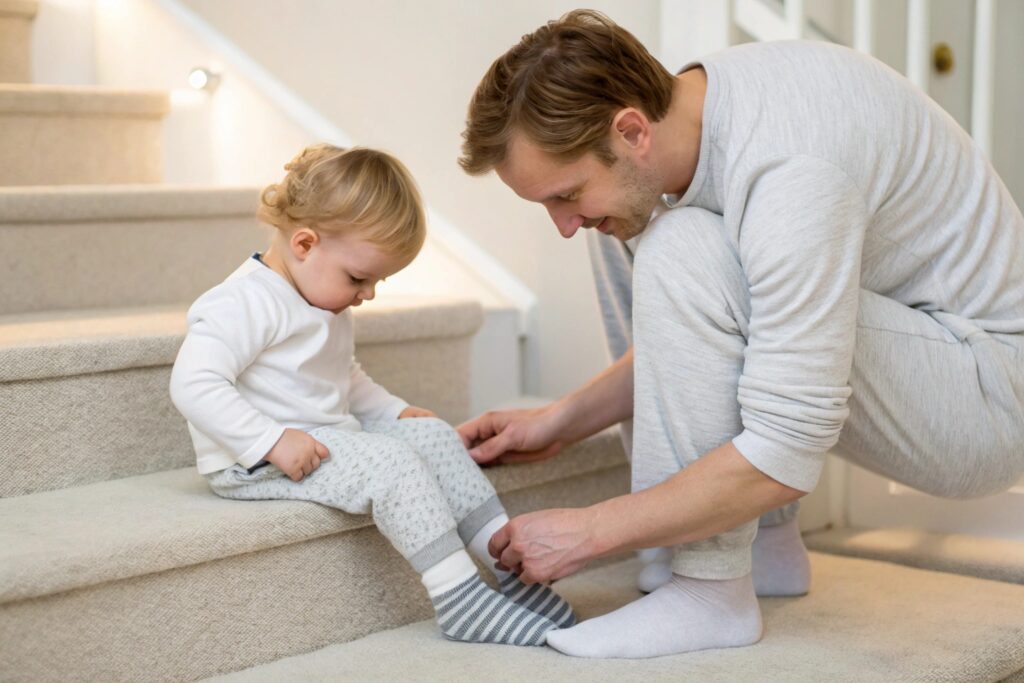
What are practical ways to help toddlers learn to dress?
- Choose easy-on clothing: Elastic waistbands, wide necks, and Velcro shoes help avoid frustration.
- Let them start small: Encourage them to pull up pants or put on socks first.
- Offer two choices: “Do you want the red pants or the blue ones?”
- Use a mirror: Toddlers love seeing themselves succeed.
- Make it a routine: Dressing after breakfast, before leaving—same order, same time.
| Tip | Why It Works |
|---|---|
| Lay out clothes in order | Helps toddlers learn sequencing |
| Use dressing boards | Visuals guide what goes on first |
| Celebrate effort | Reinforces learning over neatness |
What challenges might come up?
- Impatience: Toddlers might give up quickly—praise attempts, not results.
- Backwards shirts: Resist fixing it right away—ask them if it feels right.
- Outfit battles: Offer limited options and let them choose.
The goal isn’t to dress perfectly—it’s to participate and try.
Signs Your Child Is Ready to Choose Their Own Outfits?
Getting dressed is one thing. Choosing what to wear is another skill—rooted in creativity, confidence, and independence.
Children typically show readiness to pick their own clothes between 3 and 5 years old. You’ll see signs like strong preferences, emotional responses, or dressing play during pretend games.
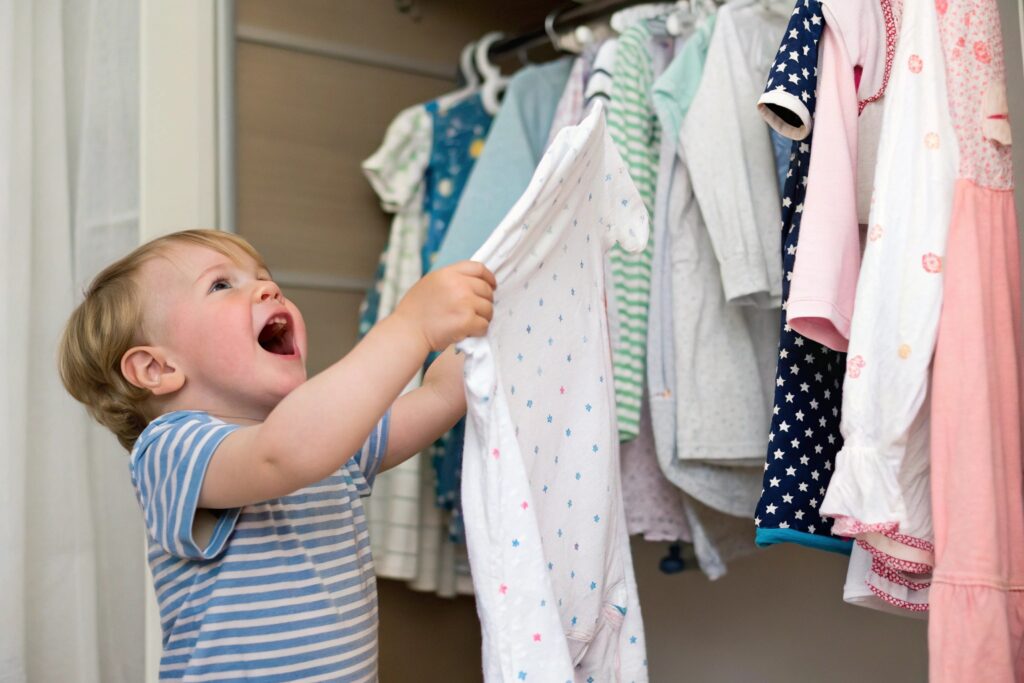
What are clear signs your child is ready for outfit independence?
- They reject your choices: “I don’t want that shirt today!”
- They ask for specific items: “Where’s my dinosaur hoodie?”
- They explore color or pattern preferences
- They imitate you: Trying on your shoes or accessories
- They express pride: “I picked this all by myself!”
This is also a great time to introduce simple organizing systems—like drawers labeled “tops” and “bottoms” or using dividers for school vs. home clothes.
| Readiness Signal | Encouraging Action |
|---|---|
| Requests to dress self | Give time and space in the morning |
| Reacts emotionally to colors | Let them explore preferred shades |
| Makes fashion “mistakes” | Avoid correcting unless necessary |
Should you let them wear mismatched outfits?
Yes—within reason. Letting kids explore style builds confidence. Save intervention for special events, weather issues, or if it truly affects their comfort or safety.
Why Letting Kids Dress Themselves Builds Confidence?
Every button, zipper, and outfit choice is an act of self-trust. The more they do, the more they grow.
Letting kids dress themselves supports emotional, social, and developmental growth. It teaches autonomy, reduces power struggles, and helps children feel capable.
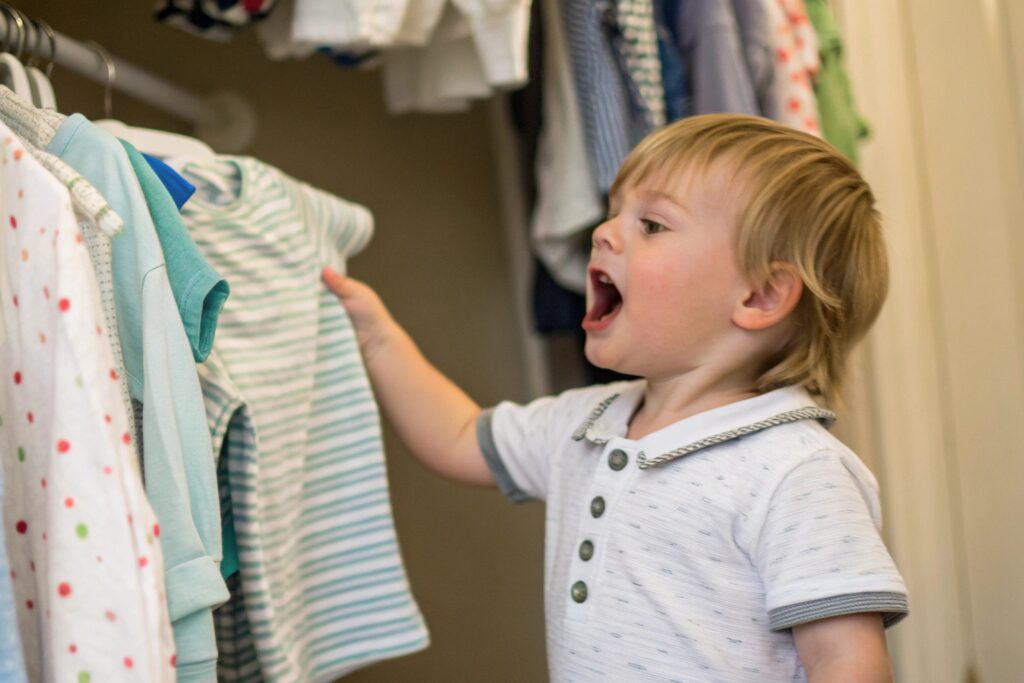
How does dressing support childhood development?
- Fine motor skills: Buttons, snaps, and socks all build hand strength and coordination
- Executive function: Planning and sequencing (socks before shoes!) enhances cognitive growth
- Emotional maturity: Dressing mistakes teach natural consequences—like getting cold without a jacket
- Self-identity: Clothing becomes a way to explore personality and preferences
| Developmental Benefit | Dressing Impact |
|---|---|
| Confidence | “I did it myself!” |
| Responsibility | “I packed my own gym clothes.” |
| Social skills | Learning appropriateness for settings |
How can parents support without taking over?
- Offer help only when asked
- Compliment their effort, not just the outfit
- Let them feel the pride of problem-solving (“Which way is the tag?”)
- Be patient—dressing takes time before it becomes quick and smooth
Letting go of control, even a little, sends the message: I believe in you.
Conclusion
There’s no single “right” age to stop dressing your child—but the sooner you offer guidance, the sooner they grow in confidence. With support, patience, and the right routines, getting dressed can go from daily battle to daily win.

